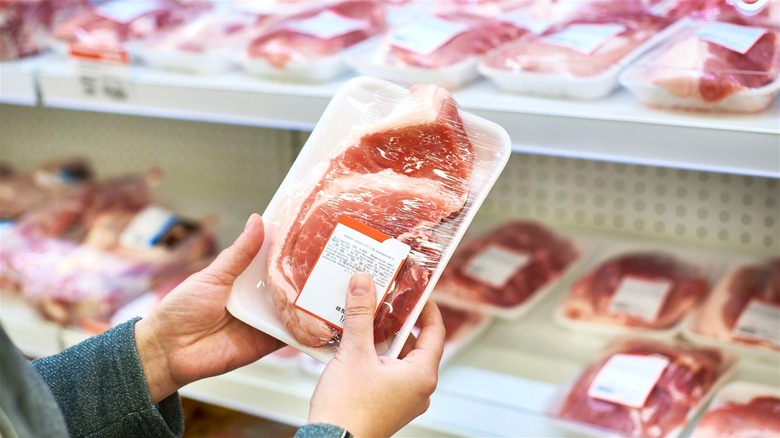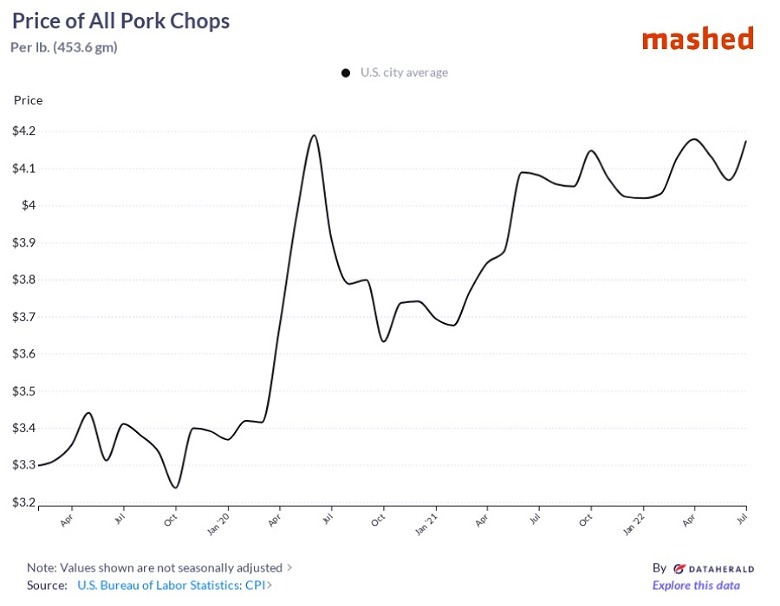Pork's Inflation Will Give You Sticker Shock
With so many unique ways to use bacon in everyday meals, it's no wonder pork was considered the most popular meat in the world in 2019 (via USDA). Many delicious dinner recipes include pork, but those of us who eat at home may be reconsidering how much of the highly-sought after meat we're buying due to the overall rise in meat prices.
Inflation has had an irrevocable impact on Americans' wallets. With inflation peaking in June at 9.1%, more people are taking a closer look at how much they're spending since the cost of groceries has steadily increased by roughly 1.4% each month in the last year (per Fox Business). Not only have eggs seen the greatest price increase, but the rising cost of ground beef has led more modern-day consumers to buy cheaper meat options as well.
While a New York Federal Reserve survey predicts inflation to slow over the next five years (per CNBC), meat prices — and pork, in particular — continue to rise.
The cost of pork has risen 22% in the last three years
You may be privy to the increase in ham's cost, so it should come as no surprise that pork prices, in general, are continuing to climb. According to the Bureau of Labor Statistics (BLS), the cost of pork chops per pound was $3.41 in July 2019. While the first cost spike happened around May and June of 2020 due to pandemic-related supply chain distribution issues and increased consumer demand for meat, fish, and eggs, the cost leveled off but then continued to steadily rise into 2021 and beyond.
In February 2021, the cost of pork chops per pound was $3.67. By July 2022, the cost was $4.17, resulting in a 14% increase in just over one year. The total increase in pork's cost over a 3-year period was 22%. With inflation leveling off, shouldn't pork be more affordable?
In actuality, while demand for pork has been consistently strong over the last year, production is expected to slow in the latter half of 2022 (via The American Farm Bureau Federation). Many factors are up in the air when it comes to the cost of pork, including China's potential import of U.S. pork products in the future and the steady demand for pork products from U.S. consumers (per National Hog Farmer). With inflation's past impact on supply and demand, anything is possible.

